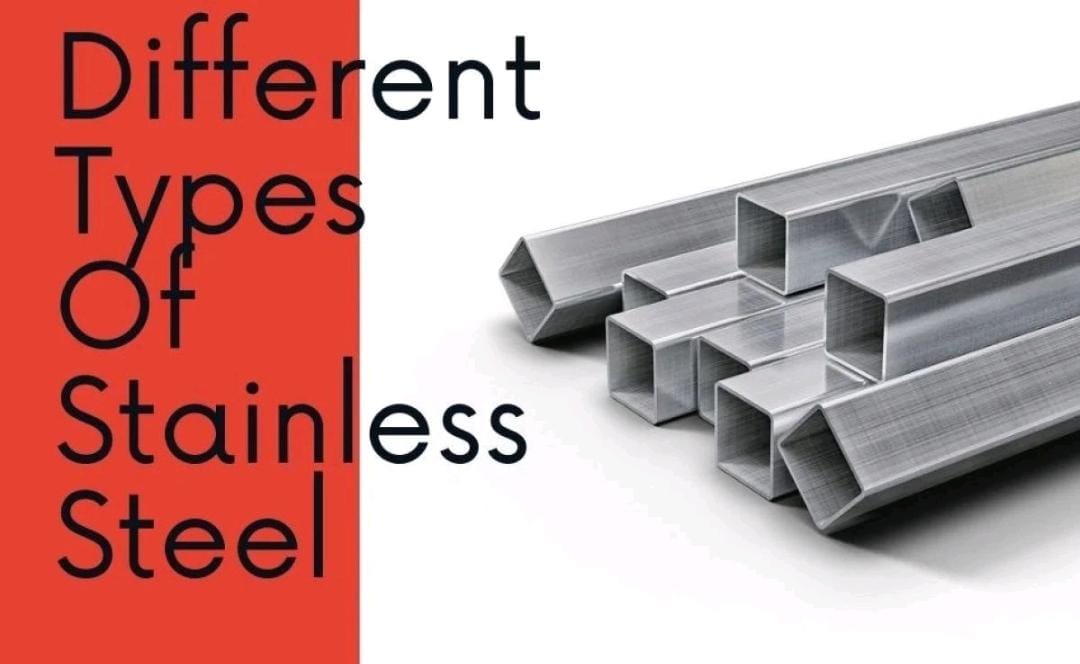Introduction
Stainless steel is a versatile and durable material used in a wide range of applications, from cookware and cutlery to construction and medical equipment. There are many different types of stainless steel, each with its own unique properties and characteristics. Here are some of the most common types of stainless steel:
Austenitic Stainless Steel
Austenitic stainless steel is a type of stainless steel alloy that is known for its excellent corrosion resistance, high ductility, and good strength at both high and low temperatures. The term “austenitic” refers to the crystal structure of the alloy, which is face-centered cubic (FCC) and has a high degree of toughness and ductility.
Austenitic stainless steel is composed mainly of iron, with significant amounts of chromium, nickel, and sometimes other elements such as molybdenum, manganese, and nitrogen. The most common grades of austenitic stainless steel are 304 and 316, but there are many other grades available that offer different properties and applications.
Austenitic stainless steel is widely used in a variety of applications, including food processing equipment, chemical processing equipment, pharmaceuticals, medical devices, and architectural structures. It is also commonly used in household items such as kitchen sinks, cutlery, and appliances.
Ferritic stainless steel
Ferritic stainless steel is a type of stainless steel alloy that is known for its high resistance to corrosion, good ductility, and excellent formability. The term “ferritic” refers to the crystal structure of the alloy, which is body-centered cubic (BCC) and has a high degree of magnetic permeability.
Ferritic stainless steel is composed mainly of iron, with significant amounts of chromium and sometimes other elements such as molybdenum, titanium, and aluminum. The most common grades of ferritic stainless steel are 409, 410, 430, and 446, but there are many other grades available that offer different properties and applications.
Ferritic stainless steel is widely used in a variety of applications, including automotive exhaust systems, heat exchangers, cooking utensils, and architectural structures. It is also commonly used in household items such as washing machines, refrigerators, and dishwashers. Due to its magnetic properties, ferritic stainless steel is also used in applications where magnetic properties are required, such as in some electrical transformers and motors.
Duplex stainless steel
Duplex stainless steel is a type of stainless steel alloy that contains both austenitic and ferritic microstructures in roughly equal proportions. This combination of microstructures gives duplex stainless steel a unique combination of properties, including high strength, excellent corrosion resistance, and good weldability.
Duplex stainless steel is composed mainly of iron, with significant amounts of chromium, nickel, and sometimes other elements such as molybdenum, nitrogen, and copper. The most common grades of duplex stainless steel are 2205, 2304, and 2507, but there are many other grades available that offer different properties and applications.
Duplex stainless steel is widely used in a variety of applications, including chemical processing, oil and gas exploration and production, pulp and paper production, and marine engineering. It is also commonly used in structural components, heat exchangers, and storage tanks. Due to its excellent combination of properties, duplex stainless steel is often preferred over other types of stainless steel in applications where high strength, corrosion resistance, and good weldability are required.
Martensitic stainless steel
Martensitic stainless steel is a type of stainless steel alloy that is known for its high strength, hardness, and wear resistance. The term “martensitic” refers to the crystal structure of the alloy, which is body-centered tetragonal (BCT) and has a high degree of hardness and brittleness.
Martensitic stainless steel is composed mainly of iron, with significant amounts of chromium, carbon, and sometimes other elements such as nickel, molybdenum, and vanadium. The most common grades of martensitic stainless steel are 410, 420, and 440, but there are many other grades available that offer different properties and applications.
Martensitic stainless steel is widely used in a variety of applications, including cutlery, surgical instruments, bearings, and valves. It is also commonly used in components that require high strength and wear resistance, such as gears, shafts, and springs. However, martensitic stainless steel is less corrosion-resistant than austenitic or duplex stainless steel, and therefore may not be suitable for certain applications where corrosion resistance is a primary concern.
Precipitation hardening stainless steel
Precipitation-hardening stainless steel is a type of stainless steel alloy that is known for its high strength and excellent corrosion resistance, combined with good toughness and formability. The term “precipitation hardening” refers to a heat treatment process that causes small particles of a second phase to form within the alloy, which increases its strength.
Precipitation-hardening stainless steel is composed mainly of iron, with significant amounts of chromium, nickel, and sometimes other elements such as copper, aluminum, and titanium. The most common grades of precipitation-hardening stainless steel are 17-4 PH, 15-5 PH, and 13-8 MO, but there are many other grades available that offer different properties and applications.
Precipitation-hardening stainless steel is widely used in a variety of applications, including aerospace components, chemical processing equipment, medical implants, and high-performance racing cars. It is also commonly used in structural components, gears, and springs that require high strength and corrosion resistance. The heat treatment process used to produce precipitation-hardening stainless steel can be complex, and the alloy must be carefully heat-treated to achieve the desired properties.
Read More :
What is Purging Welding Stainless Steel? – The procedure of welding stainless steel can be challenging. In order to guarantee that the finished product is of the greatest quality and free from flaws, it is crucial to properly purge the weld.
316 Stainless Steel-Material, Properties, Composition, Uses – Grade 316 stainless steel is a highly versatile material with excellent chemical, physical, and mechanical properties. Learn about its uses.


